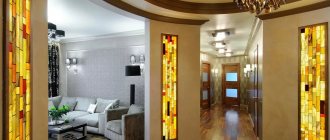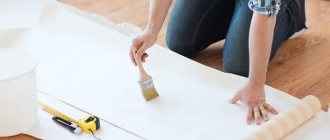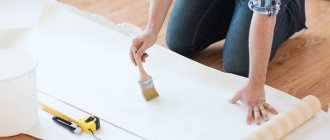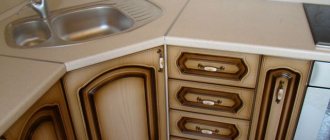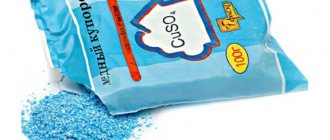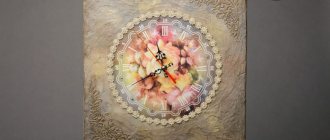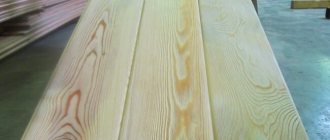Home » Hobbies and Crafts
Svetlana Shevtsova 04/06/2020
4055 Views
For many centuries, stained glass windows have delighted the human eye with their extraordinary beauty. Despite the fact that this is far from a new type of art, it never ceases to be relevant and in demand.
A carefully executed beautiful stained glass window can be an excellent addition to any interior, as well as add zest and a touch of originality to it.
Technicians
Amazing work of a master, incredibly complex stained glass window
Any novice craftsman, and even a person who has never done this before, can create glass paintings if you choose the right technology. Now there are ways to create stained glass that give a result that is not much different from the classical version, but the process itself is much simpler.
And materials for this type of art can be found in art stores, they are available to everyone.
Stained glass techniques have evolved over the centuries, combining the knowledge of old masters and new methods, a large number of which are still used today.
Beautiful stained glass windows
Depending on the conditions in which the finished stained glass window will be located, it can be made either in an ancient spirit or in a more modern one. Each of the styles and methods of performance finds its application, as they say, “for everyone.”
Now there is an incredible variety of ways in which stained glass windows are made with your own hands, but only a few of them are the main ones.
Classical technique
Classic stained glass on the ceiling
Classical technique Classical technique gained its popularity back in the Middle Ages. Its peculiarity is that each fragment of the picture, cut with a glass cutter, for example, a diamond, and having a different shade, is placed in a metal frame.
This method is the most complex and very painstaking; glass paintings that involve its use are trusted only to highly qualified craftsmen with extensive experience who have their own secrets of the technique.
To work, you need a large number of special tools designed for cutting fragments (glass cutter), soldering iron and solder. It is also necessary that the workplace is well lit.
It makes sense to buy all the tools only if the goal is to do it professionally, since the equipment is quite expensive.
This technique is used, for example, to make stained glass with facets - very popular and beautiful glass paintings.
Film technology
Delicate film stained glass
Film technique It is also called the English technique, and it is much lighter than the previous one. The essence of the method is to apply a self-adhesive film to the prepared glass according to a previously prepared sketch of the painting.
Each piece is then framed with lead tape to imitate a metal frame. This tape does not need to be soldered. The film also gives a slight mirror effect, which looks very nice.
This method is much simpler than the previous one, since it does not involve cutting a huge number of small pieces of glass and processing them. The English technique requires much less time, and a novice master can easily master it and create stained glass with his own hands.
Fusing technique
Fused glass looks unusual
“Fusing” technique The technique has existed exactly as long as glass has been produced and during all this time it has been significantly improved by craftsmen. The name comes from the word “fusing” - mixing.
It is on the mixing of glass fragments that this method of creating stained glass is based. The technique requires special equipment, so you won’t be able to familiarize yourself with this method at home.
The principle of the technique is as follows:
- First of all, a drawing is prepared and applied to a sheet of paper.
- Glass coated with a special glue is placed on top of the sheet.
- Colored parts are laid out on a layer of glue
- The painting blank is placed in a furnace, where the glass is melted and the fragments are fastened together
The mosaic is gradually heated and maintained at a temperature of about 800 degrees. The process must proceed under the strictest control, because if the moment of readiness is missed, the material will begin to change structure and crystallize.
- After the product has become homogeneous, it is cooled
- The procedure is performed again
- The product is not only heated and cooled, but also processed
At the end of the work, the output is a solid picture of fragments of colored glass firmly welded together, which does not have sharp corners in the image, in which bubbles can be seen.
Stained glass "Tiffany"
Elegant glass painting using the Tiffany technique
Stained glass “Tiffany” This method is somewhat similar to the classic one. To work, you need to prepare two sketches in natural size in duplicate. One of them is cut into fragments; colored glass will be cut along them.
Each piece of stained glass is processed and framed with copper tape, which is soldered when the picture is assembled. Copper tape is much easier to use than lead due to its flexibility, so products made using this technique are used to decorate not only windows and doors, but also interior items.
This stained glass window looks especially beautiful in combination with varnished wooden elements.
Casting technique
Variety of interesting shapes
Casting technique One of the most complex and rarely used methods. Its complexity lies in the fact that colored glass fragments are not cut, but blown by hand according to an already conceived shape and folded into a kind of panel.
Then all the fragments are assembled using mortars. Such applications are especially beautiful because they create a special play of light.
It is difficult to apply this technique at home, and as a rule, such paintings are not used for interior design, but are individual pieces of art.
Sandblasting method
Fascinating stained glass
Sandblasting method To work in this technique, you need special equipment that delivers a stream of sand under high pressure. Very often used for stained glass ceilings using curved patterns.
The work consists of the following stages:
- The layout of the drawing is fixed on transparent glass
- Free areas of the stencil are processed using equipment that supplies sand. After processing, the glass becomes matte and opaque
The stencil is removed and a light drawing is obtained. There is no need for cutting glass or soldering, but without equipment it is almost impossible to do this at home. Of course, you can use sandpaper and make the stencil out of metal, but the quality of the work will still be much worse.
Etching technique
An unobtrusive addition to the interior
Etching technique Here it is necessary to use hydrofluoric acid, which has a destructive effect on silicon dioxide, the main component of glass.
To ensure that the acid acts only on certain areas of the stained glass window, stencils made of acid-resistant material are used. Thanks to such stencils, you can create multi-layered patterns with different reliefs, which are even used to decorate tableware, such as glasses.
It is better not to engage in such activities on your own, as you can easily burn the skin and mucous membranes.
painting
Painted stained glass
Painting Painted stained glass imitates any possible technique, for example, in this way you can imitate lead binding.
The process occurs in several stages:
- It is necessary to develop a sketch and prepare glass
- Laying glass on top of the pattern
- Repeating contours on glass, most often black paint is used for this
- After the outline has dried, the drawing is filled with colored paints.
This technology is one of the most accessible; it will be discussed in more detail below as step-by-step instructions. Even children can be involved in the painting process - it’s absolutely safe and interesting, and in the future the finished creation can be placed in a children’s room to create more comfort.
Contour filling of stained glass
Filled stained glass
Contour filling of stained glass Just like the previous method, this one allows you to imitate all other methods of creating stained glass paintings; it is also very simple to perform stained glass filling by watching the corresponding video master class.
First, the outline is transferred to the glass, and then the stained glass paint is poured in a fairly thick layer.
Stained glass styles
Refined floral stained glass window
Stained glass styles The appearance of a future glass painting is influenced not only by the method by which it will be made, but also by the style, which is selected in accordance with the rest of the interior elements to achieve a harmonious interior environment.
There are quite a lot of styles of stained glass compositions, and even more subtypes of styles , so sometimes it is quite difficult to attribute a drawing to a specific style. First of all, you should rely on the distinctive features of the image, the selection of colors and the main characteristics.
Antique stained glass
Antique motifs
Antique stained glass This style largely gave rise to other, later ones. It is based on ancient Greek culture.
Such stained glass windows can be made using any technique, but they must consist of a huge number of fragments. Features of antiquity in stained glass include the presence in the paintings of amphoras, columns, nymphs and triangular pediments of buildings.
Gothic
Intricate Gothic stained glass windows
Gothic originates from Western Europe during the Middle Ages. Initially, only religious scenes were used, then animal figures and hunting scenes were included.
The style is characterized by deep shades: black, purple, blue, dark green.
Ancient Egyptian stained glass
Vibrant colors and recognizable images
Ancient Egyptian stained glass In Europe, this style of stained glass became popular thanks to Napoleon, who brought it from Egypt after his journey there.
A distinctive characteristic is the use of golden, sandy, ocher shades in combination with brown, green and cobalt. Hieroglyphs and Egyptian ornaments are used.
Indian stained glass
Indian style
Indian stained glass Initially, such paintings were used to decorate rich houses in India.
Characterized by bright, uplifting colors: light blue, bright red and yellow. The presence of gilding is often observed. Indian deities and ornaments are depicted; paisley, also known as “cucumber,” is especially popular.
Modern
Delicate stained glass
Modern Style became popular after an exhibition in Paris in 1990, since then it has firmly established its position in art.
The main principle in such paintings is “form is more important than content.” Stained glass windows are distinguished by refined lines, delicate tones, and often contain plants or bouquets.
Art Deco
Simplicity and symmetry
Art Deco Based on simple, uncomplicated forms.
Stained glass windows of this style are characterized by symmetrical figures, clear lines and repetition of patterns.
Abstract stained glass
The strangeness of abstraction
Abstract stained glass Abstract art is characterized by a combination of regular and irregular forms, bright colors, as well as expression, which is transmitted to the entire interior.
How to make a stained glass window
The easiest stained glass window to make is poured. To make it, use a polymer contour, acrylic varnish for stained glass or special paint.
- First you need to select a sketch. Draw it or print it on paper. When using transparent glass, you can place a sketch underneath it. If the surface is matte or mirrored, the pattern is applied with a special disappearing marker.
- The entire surface is thoroughly cleaned and degreased.
- It is necessary to apply a polymer contour along the contour of the drawing. All lines must be closed.
- The contour must be allowed to dry. After which each part of the drawing is filled with special paint. It doesn't need to be smeared. Just drop some paint near the outline without touching it, and it will spread over the element itself. The stained glass window will turn out beautiful, shimmering in the light.
Despite the apparent complexity, making stained glass windows is quite easy. You just need to choose a sketch that suits your interior, and then a little patience and the unusual decorative element is ready.
Don't be afraid to experiment, feel free to show your creative imagination!
Step-by-step master class
Creating a stained glass window
Making stained glass windows yourself is actually not difficult; it does not require any special skills. Film and painted techniques are best suited for creating stained glass with your own hands. We will look at them step by step and make a simple stained glass window using each of these two methods.
Painted technique
Basis for stained glass
1 In order to make such a picture, first of all it is necessary to take the dimensions of the glass, which will later turn into stained glass. Then, according to the dimensions, a template is selected or drawn by hand with a pencil or marker. If the drawing is taken from the Internet, and the glass size is larger than A4, then it must be printed on sheets of paper, and then these sheets must be joined together into a single whole. Cardboard is also suitable as a base; it is denser and the glass will slide less.
2 In this example, we will consider the option of creating a drawing yourself. It is important that all lines are clear.
Drawing for stained glass
3 Glass with a small thickness is placed on paper with a finished design. It must be degreased with an alcohol-containing or ammonia-based product, or with simple alcohol.
Degreasing glass
4 The surface must be completely dry, so the degreaser is thoroughly wiped off with a soft cloth.
Surface drying
5 The next step is to draw the outline of the stained glass window, that is, the template is outlined on the glass. Black paint is most often used for this because it is most visible. You can also take contour paste, ready-made from the store or homemade, which includes PVA glue, ink and silver. Important: for creating stained glass, only stained glass or acrylic paints, which are sold in tubes, are recommended. Let the contour dry completely so as not to smear anything in the future.
Drawing an outline
6 The outline of the picture is filled with color. You need to work carefully. The dye is applied with a brush or sponge if the area is large enough and you want to create a textured image.
Filling an outline with color
7 If the drawing should be voluminous, then it is better to apply shadows and lights after the base layer has dried.
Applying shadow and light
8 After complete drying, the stained glass window is ready.
The stained glass window is ready
Film technology
Sketch on different sheets
1 Most often, the sketch is printed on a printer on different sheets and then connected, as in the previous example. If the work is being done for the first time, then you should not take too complex patterns. It is also necessary to equip the workplace with lighting so that the light of the lamp is directed at the sketch from below, otherwise it will be quite difficult to work.
2 All parts of the sketch must be glued together so that the lines match, as shown in the photo. Excess fragments, if any, are cut off with scissors.
Gluing a sketch
3 The glass is cleaned, degreased on the side in contact with the sketch and wiped thoroughly.
Glass cleaning
4 The glass is applied and fixed to prevent distortion. To do this you will need double-sided tape.
Fixing glass
5 The glass is degreased from the outside and wiped dry.
Degreasing glass
6 In order to make stained glass using this technique, you will need self-adhesive film. For each fragment, a suitable piece is cut out, in our case in the first step these are strips.
Film strips
7 Before gluing the film, the area is once again degreased and wiped dry.
Re-prep the surface
8 Then the backing is carefully removed from the edge of the film fragment, this edge is fixed to the glass and smoothed with a squeegee.
Removing the substrate
9 With a quick movement so that dust does not have time to get on the glass, the film is pressed and smoothed. Remains can be trimmed with a knife, if there are any.
Film application
10 The film should fit onto the contour visible from under the glass.
Film over outline
11 Further, the process follows the same principle.
Repeating the process
12 When all the colors are laid out, the lead tape is applied for framing.
Frame sticker
13 The entire tape is rolled with a roller.
Roller rolling
14 At the end of the work, all joints are pressed with a special clamp, the surface is thoroughly wiped with detergent. The stained glass picture is ready.
Ready stained glass
Preparatory work
First you need to prepare all the materials and tools necessary for the work. These include:
the well-known PVA glue;
special dyes for fabrics and paints for creating stained glass windows;
brushes of different sizes;
aluminum wire about 1.5 millimeters thick.
It is worth noting that the most beautiful stained glass windows are those on the south-facing window. It is on it that the colors play in a special fabulous and interesting way.
Stages of creating a pattern
Before you start creating stained glass windows, you need to decide exactly what shape they should be and what paints will be used. You can create an ornament on the window, like, for example, a kaleidoscope, or more “live” drawings of birds, various animals, flowers, etc.
Before transferring the design to the glass, you need to draw it on paper, experiment with shades, and only when everything is perfectly matched can you draw on the window.
You need to remove the glass from the window frame and then thoroughly degrease it. You can do this yourself using a cotton swab soaked in alcohol or acetone.
Place the paper with the pattern on a flat surface, and then press it with glass so that the placement of the image on the paper coincides with its desired location on the glass.
You need to transfer the contours of the future drawing onto the glass with a pencil (see photo), after which you can proceed to bending the wire along them.
After the wire is ready, one side of it must be coated with PVA glue and applied to the glass. In order for the wire to stick well, it is advisable to put some kind of weighting agent on it. After about an hour or two it should stick completely.
During this time, you can prepare the paints. Fabric dyes must be diluted in water and then passed through gauze or other similar material. This will eliminate any lumps. Next, the dyes must be mixed with glue until the consistency of not too thick sour cream.
In order to determine whether the desired shade has been obtained, the paint must be applied to any piece of glass. After drying you will see what happened. If the paint turns out to be too bright, you can add an emulsion to it, and if it’s pale, you can add dye. In order not to waste time preparing paint with your own hands, you can buy ready-made mixtures for stained glass windows.
After all the shades of paint are ready, they need to be poured into jars that are tightly closed with lids. This will prevent them from drying out prematurely.
Applying paint to a window must be approached very responsibly. To do this, you need to prepare clean brushes of the required sizes and be patient. In order to spread the paint over the selected area, you need to pour a small amount of it in the middle, and then carefully work with the brush. In this case, you need to make sure that it does not extend onto the wire, much less beyond it (see photo).
When creating stained glass windows on a window, you need to monitor the thickness of the paint layer. The thicker it is, the more saturated the colors will appear. Under no circumstances should you touch paints that have not dried on the glass, because there will be an imprint on them, which, when painted, will no longer turn out to be the shade that was originally intended.
Having used one color on the window, you must thoroughly rinse all the brushes, after which you can move on to using another shade. In order to avoid accidental mixing of colors, adjacent areas should be painted only after the previous ones have dried. Just in case, you should always have a container of water on hand.
After all the paints have completely dried, you need to take the glass in your hands and evaluate the quality of the stained glass windows. There are times when glue residues are visible on the back of the glass. To disguise them, you can paint the contours of the wire with white or any other paint. Only after this paint has dried can the stained glass glass be installed back into the window.
To make stained glass windows last as long as possible, they can be coated with colorless varnish, as, for example, in the photo.
This, in fact, is the entire master class, which you can easily do with your own hands.
Another option
There is another simpler method for creating stained glass windows yourself. A detailed master class will be described below. So, to create a picture on glass you will need:
lead tape, which can be found in almost any hardware store;
manicure scissors with rounded tips;
paint for creating stained glass;
degreaser (alcohol or acetone);
containers for paints and water.
As in the above version, the glass must be removed and the desired design drawn on it with a marker. Next, according to the image, using a special device, which often comes complete with lead tape, the material itself is applied. The tape is very similar to a sticker. At the bottom there is an adhesive surface covered with paper. After peeling off the paper, the lead tape can be easily glued to the glass (see photo).
The remaining material is cut off with stationery scissors. It is better to trim the joints of the tapes with nail scissors. After the lead tape is properly glued, you can proceed to applying paints to the glass. The application of the image is carried out in almost the same way as in the previous version.
Window trims are an essential part of the exterior design of a home. Everyone remembers the old wooden huts with intricate window frames. That's it.
Slopes on windows are just as important to do correctly as it is to install the window structures themselves. They play not only an aesthetic role.
Stencils for stained glass
Painting on glass with stained glass paints!
How to make stained glass on glass with your own hands at home: step-by-step master class + stencils | (120+ Photos & Videos)
Do-it-yourself film (overlay) stained glass window. Video tutorial on making stained glass overlay
How to make stained glass on glass with your own hands at home: step-by-step master class + stencils | (120+ Photos & Videos)
[/wpsm_video
Imitation lead binding
A distinctive feature of the original stained glass window is the presence of a metal binding. When creating decor with your own hands, you need to imitate this element so that the stained glass window looks realistic. This can be done using the following methods:
- Gluing borders with special tape. You can purchase material for processing stained glass at an artist salon. It is used to highlight contours. Typically the tape is 1/8 inch wide, and its structure resembles regular tape. The only difference is the color. In terms of work, this material is no different from ordinary material.
- Using this method, you can easily understand how you can make stained glass windows with your own hands with imitation binding using wire. To do this you will need copper or aluminum wire, porcelain glue, and also dish glue. It is not recommended to use superglue because it leaves a lot of residue. You can use any cable with a cross-section of 0.02–2.5 mm. First, the wire must be carefully glued to the seams, and after that a patina is applied to it.
- Imitation using a plate that you can make yourself. You will need the following:
- PVA glue for porcelain 50 ml;
- Mascara 30 ml;
- Aluminum powder 40 gr.
First, combine the listed components to obtain a homogeneous mixture. If desired, you can replace aluminum powder with bronze. Then the mass will acquire the color of brass. Even before painting the product, you should know what color you will get. Keep in mind that this paste cannot be stored for a long time. Therefore, it must be prepared in small quantities and stirred periodically during use. The painting work itself is done using a brush or a small syringe. At first it will be quite difficult for you, but gradually you will get used to it.
Sketch development
You should not immediately make stained glass on windows and doors. It’s better to see how the decor will look on an old piece of glass, a decorative vase or glass. It is necessary to take into account that the paints intended for this work have their own characteristics. Usually fired and unfired are used. The first ones are intended for creating stained glass windows, which will subsequently be hardened in a furnace. However, if you are going to decorate a plastic window, then this material will not suit you.
Unfired paints are easier to use. They not only retain their bright color, but also do not require heat treatment . True, you will have to look after them very carefully. Particular attention should be paid to the selection of detergents that should not contain aggressive substances. It is necessary to take care of a window decorated with such decor very carefully.
If you do not yet have much experience in making stained glass windows with your own hands using stencils, then you should not skimp on paint. It is best to choose high quality products from imported manufacturers. It has ideal density, and often comes with special dispensers. During operation they do not spread or smear.
You can also buy a stained glass contour separately. They are offered for sale in the form of tubes , which ensures their convenient application. Pay attention to the color of the outline; under no circumstances should it be black. Only craftsmen who have the skills to create stained glass can work with it. For beginners, it is best to choose contours in a silver or white shade. Surely the first time you will not be able to create the required width; you will have to practice a little. Make sure that no excess remains; it should be wiped off immediately with a damp sponge. Otherwise, they will dry out, after which it will be more difficult for you to remove them.
